Pioneer Museum
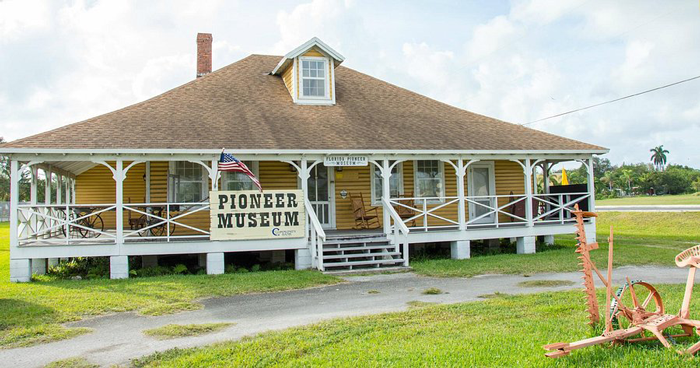
Its early history involved conflicts between Southern and Northern Settlers. The first settlers, originally from Topeka, Kansas has settled in Homestead but moved out into the wilderness area that became Florida City in 1910. Many southern families seeking homesteads followed. In 1913 the Model Land Company from Michigan purchased 22,000 acres. They advertised heavily in Detroit and attracted northerners to their “Garden of Eden”. Detroiters named the area Detroit but apparently became dissatisfied with their purchases. Conflict developed with the Southern families and the Detroiters moved back north shortly thereafter. In 1914 the city was incorporated. The remaining families named it Florida City.
By 1922, Florida City had grown to a population of over 800. The city had a drug store, a hardware store, and a three-story hotel. South of the town was the largest Ice Plant in the state and a lumber mill; however most of the towns economy came from farming. Florida City’s limits were extended to Biscayne Bay in 1925. Because of its lack of development, the landowners successfully petitioned to have the city restored to its original boundaries. A hurricane in 1926 leveled several buildings and greatly damaged others. The area economy returned to agriculture.
Florida City Pavillion
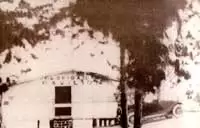
The Pavilion was constructed by the developers of Detroit, later Florida City, the Miami Land and Development Company, owned by the Tatum brothers. The Pavilion served as the main social venue for the early pioneers. Under the Pavilion was a swimming area. The bottom of the canal was covered with boards. Dancers were held upstairs. The company also constructed a recreation building at the mouth of the Detroit / Florida City Canal. The townspeople raised #1,000 in contributions for the construction of the building on Palm Drive which was used as a school and a church until it became town hall later.
The Becker House on the Florida City Canal
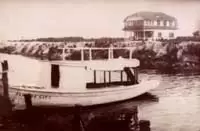
When the canal came all the way from Biscayne Bay to the Florida City Industrial Basin. The Industrial Basin was home to an ice plant, packing houses, and other businesses. The boat in the foreground was of a common design for use on the canal. The Becker House stood until it was set on fire by vandals and then torn down when Burger King was constructed.
A scene along the Florida City Canal which had carried cargo and passenger traffic from points north along the bay, inland to a point west of where US1 and Palm Drive (SW 344th Street) intersect, now. Portions of the canal are still visible, and reach west to US 1.
Royal Palm State Park Lodge
Sometime after its construction in 1916 for the Florida Federation of Women Clubs by J.F. Umphrey of Homestead. The Florida Federation of Women Clubs acquired 960 acres from Mrs. Henry M. Flagler and 960 acres from the State of Florida for its Royal Palm State Park. In 1921 the State gave them another 2,080 acres. The women operated the Royal Palm Lodge where lodging and meals were available, as a means of financing the upkeep.
They also grew Royal Palms for sale—156 of them ended up on Florida City’s Palm Drive in 1922 and others in Homestead on Krome Avenue. After the Everglades National Park was established in 1947, the park service used the lodge as its headquarters after it moved out of the Redland District Chamber of Commerce building. Later the lodge was sold and moved into Homestead where it was used as a boarding house. It was destroyed by Hurricane Andrew in 1992.
The original Rock Castle
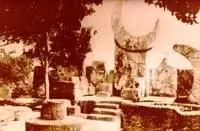
Southwest of Florida City (this from the Homestead Enterprise from Feb. 27th, 1923) reported E. Leedskalnin, a Californian, had purchased an acre of the R.L. Moser homestead and was planning to erect a home soon. This newspaper item was the first reference to Ed Leedskalnin, the builder of Coral Castle. Little did anyone know what Ed had in mind for a house. According to Jean Taylor in her “Villages of South Dade,” Ruben Moser brought home a 97 lb Latvian immigrant who was seriously ill. Mrs. Moser nursed him back to health. He bought land from the Mosers where he quarried rock for his Coral Castle, southwest of Florida City.
His lost love, “Sweet Sixteen” in Latvia, was his inspiration. In 1937, he moved his “Coral Castle” to its present location on US1 by himself and in secret. Coral Castle remains standing and continues to amaze visitors with the power of love, and what one man can create.
The two FEC Railway bungalows
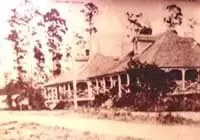
On N. Flagler in the early 1960’s before one of them burned down and the second was moved to Florida City to house the Florida Pioneer Museum. They were constructed in 1904 for about $1,500 each. One was used for the station agent and the other for the track foreman.
The houses stood just northeast of the old Dixie Drug Store, perhaps 200′ northeast of the corner of Flagler Avenue and Krome Avenue. After the FEC ceased using them they were rented out to families. Flagler was called Railroad Avenue until the Woman’s Club of Homestead lobbied to have the name changed to Flagler.
This photo is probably from a post card dating from the period between 1912 and 1920.
Historical Resources
- State of Florida Historic Resources
- More State Historic Resources
- Bureau of Archaeological Research
- Florida Smart
- Florida Department of State Historic Resources
- Historic Museum of South Florida
- Florida History.org
- Florida History Timeline